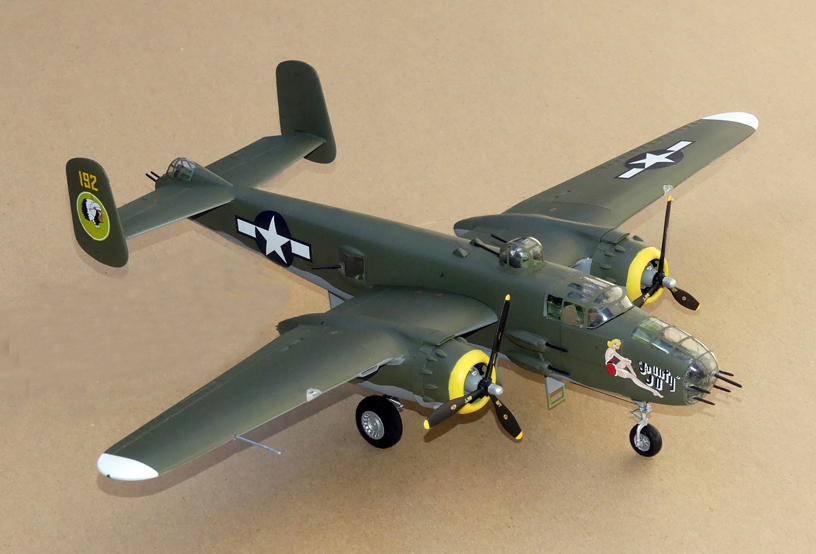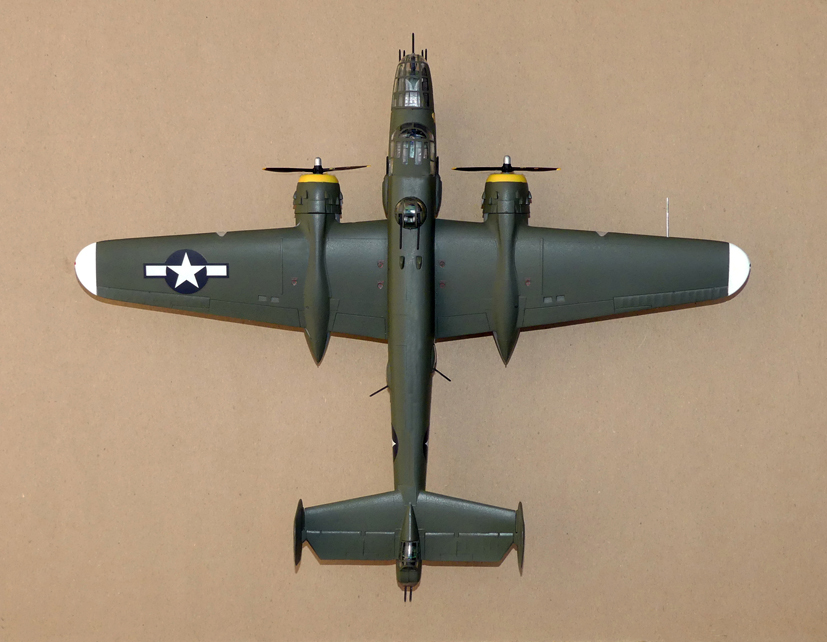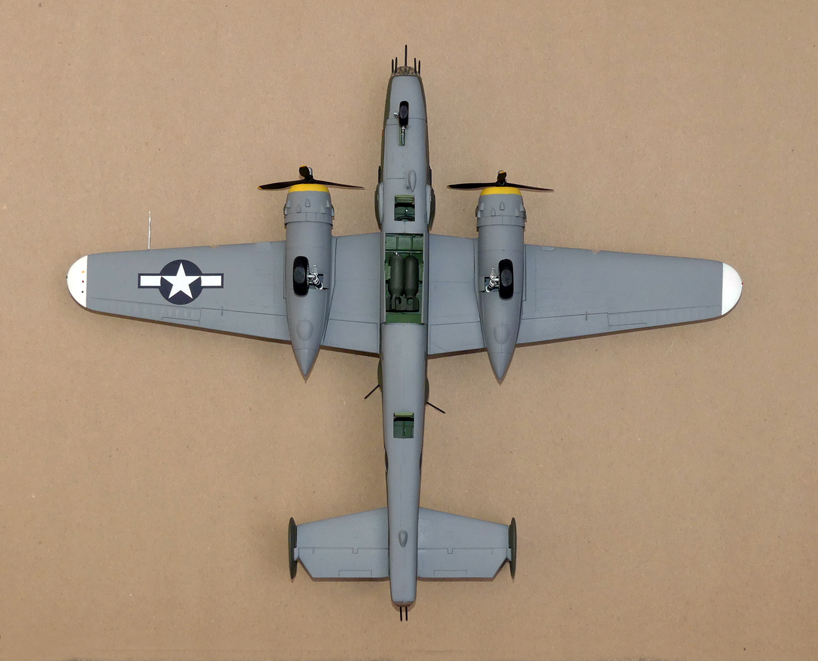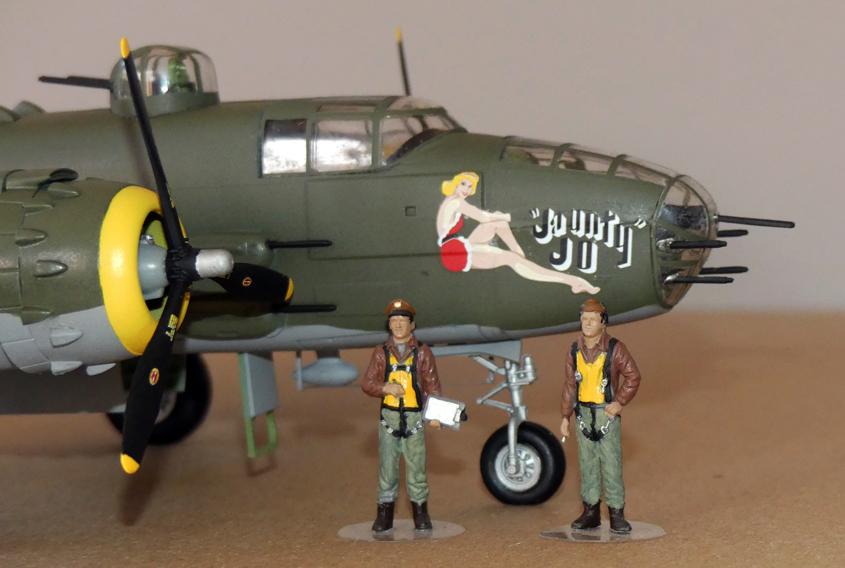

The North American B-25 Mitchell is a medium bomber that was introduced in 1941 and named in honor of Major General William "Billy" Mitchell, a pioneer of U.S. military aviation. It’s the only American military aircraft named after a real person and was perhaps the most versatile aircraft of the war. It became the most heavily armed airplane in the world, was used for high and low-level bombing, strafing, photoreconnaissance, submarine patrol, and even as a fighter.
Used by many Allied air forces, the B-25 served in every theater of World War II, and after the war ended, many remained in service, operating across four decades. Produced in numerous variants, nearly 10,000 B-25s were built. These included a few limited models such as the F-10 reconnaissance aircraft, the AT-24 crew trainers, and the United States Marine Corps' PBJ-1 patrol bomber.
The B-25B first gained fame as the bomber used in the April 18, 1942 Doolittle Raid, in which 16 B-25Bs led by Lieutenant Colonel Jimmy Doolittle attacked mainland Japan, four months after the bombing of Pearl Harbor. The mission gave a much-needed lift in spirits to the Americans and alarmed the Japanese, who had believed their home islands to be inviolable by enemy forces. Although the amount of actual damage done was relatively minor, it forced the Japanese to divert troops for home defense for the remainder of the war.
The raiders took off from the carrier USS Hornet and successfully bombed Tokyo and four other Japanese cities without loss. Fifteen of the bombers subsequently crash-landed en route to recovery fields in eastern China. These losses were the result of the task force being spotted by a Japanese vessel, forcing the bombers to take off 170 miles (270 km) early, fuel exhaustion, stormy nighttime conditions with zero visibility, and lack of electronic homing aids at the recovery bases. Only one B-25 bomber landed intact, in Siberia, where its five-man crew was interned and the aircraft confiscated. Of the 80 aircrews, 69 survived their historic mission and eventually made it back to American lines.
The majority of B-25s in American service were used in the war against Japan in Asia and the Pacific. The Mitchell fought from the Northern Pacific to the South Pacific and the Far East. These areas included the campaigns in the Aleutian Islands, Papua New Guinea, the Solomon Islands, New Britain, China, Burma and the island hopping campaign in the Central Pacific. The aircraft's potential as a ground-attack aircraft emerged during the Pacific war. The jungle environment reduced the usefulness of medium-level bombing, and made low-level attack the best tactic. Using similar mast height level tactics and skip bombing, the B-25 proved itself to be a capable anti-shipping weapon and sank many enemy sea vessels of various types. An ever-increasing number of forward firing guns made the B-25 a formidable strafing aircraft for island warfare.
There were many different variants of the B-25 built. The B-25G had a 75 mm (2.95 in) M4 cannon, one of the largest weapons fitted to an aircraft. The strafer-nose B-25J-2 carried a total of 18 .50 in. (12.7 mm) light-barrel AN/M2 Browning machine guns.
A tragic incident involving a B-25 occurred on July 28, 1945. At 9:40 a.m., a USAAF B-25D crashed in thick fog into the north side of the Empire State Building between the 79th and 80th floors. Fourteen people died - eleven in the building and the three occupants of the aircraft, including the pilot, Colonel William F. Smith. Betty Lou Oliver, an elevator attendant, survived the impact and the subsequent fall of the elevator cage 75 stories to the basement.
Facts and General Characteristics of the B-25J Mitchell:
Manufacturer: North American Aviation
Type: Medium Bomber
Crew: 5 - 6 (pilot, co-pilot, navigator/bombardier, turret gunner/engineer, radio operator/waist gunner, tail gunner)
Wingspan: 67 ft. 7 in. (20.6 m)
Length: 52 ft. 11 in. (16.13 m)
Height: 16 ft. 4 in. (4.98 m)
Max takeoff weight: 35,000 lbs. (15,876 kg)
Power Plant: 2 × Wright R-2600-92 Twin Cyclone 14-cylinder two-row air-cooled radial piston engines, 1,700 hp (1,300 kW) each
Max Speed: 272 mph (438 km/h)
Cruising Speed: 230 mph (370 km/h)
Ceiling: 24,200 ft. (7,400 m)
Range: 1,350 mi. (2,170 km)
Armament (varied by model):
Guns: 12 - 18 × .50 in. (12.7 mm) Browning AN/M2 machine guns, one 75 mm (2.95 in.) T13E1 cannon
Hardpoints: 2,000 lbs. (900 kg) ventral shackles to hold one external Mark 13 torpedo
Rockets: Racks for eight 5 in. (127 mm) high velocity aircraft rockets (HVAR)
Bomb Load: Up to 3,000 lbs. (1,360 kg)
Facts and General Characteristics of the Model:
The model is a representation of “Jaunty Jo“, the B-25J-11-NA, 43-36192 assigned to the 345th BG (Air Apaches), 498th BS, Biak Island, New Guinea. It was shot down on May 26, 1945 while on a mission to bomb the Byoritsu Oil Refinery on Taiwan. All five crew members aboard were killed. For the story of the final mission and its pilot, click or tap here: Jaunty Jo.
Model Manufacturer: Revell, Inc. (Made in China)
Scale: 1/48
Wingspan: 16.7”
Length: 14.3”
Height (tip of vertical stabilizers): 3.8”
Parts: 140
Decals: 30
Hours to build and paint airplane (not including figures): 42.3
Mistakes/problems:
1. Many of the parts did not fit will. I filed, sanded and filled in some but there are still gaps and raised seams.
2. I glued in several nuts and bolts near the cockpit for ballast. It didn’t work as the model still tips on its tail and has to be propped up.
3. The roof turret was supposed to turn but the part to keep it in place was impossible to mount inside so I glued the turret in place. The turret guns still move up and down and the propellers turn.
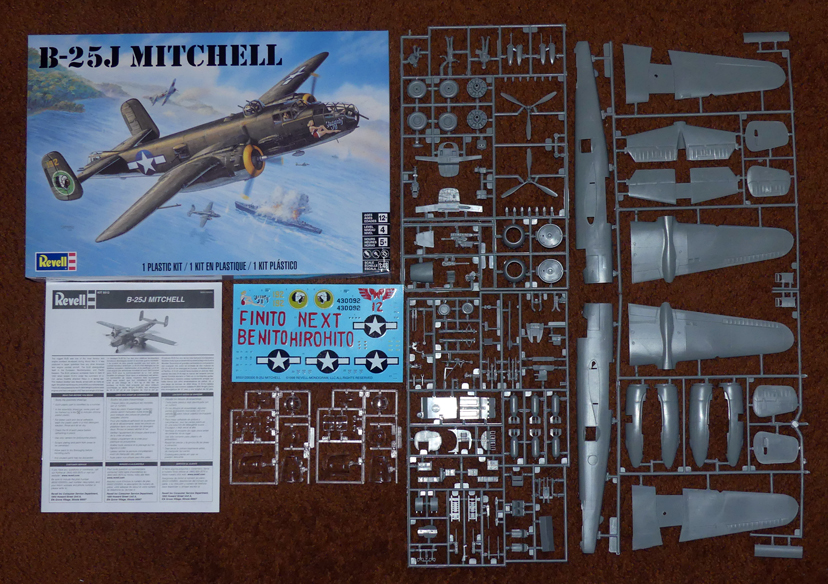

The not very detailed interior. The kit didn't even include instrument panel decals.
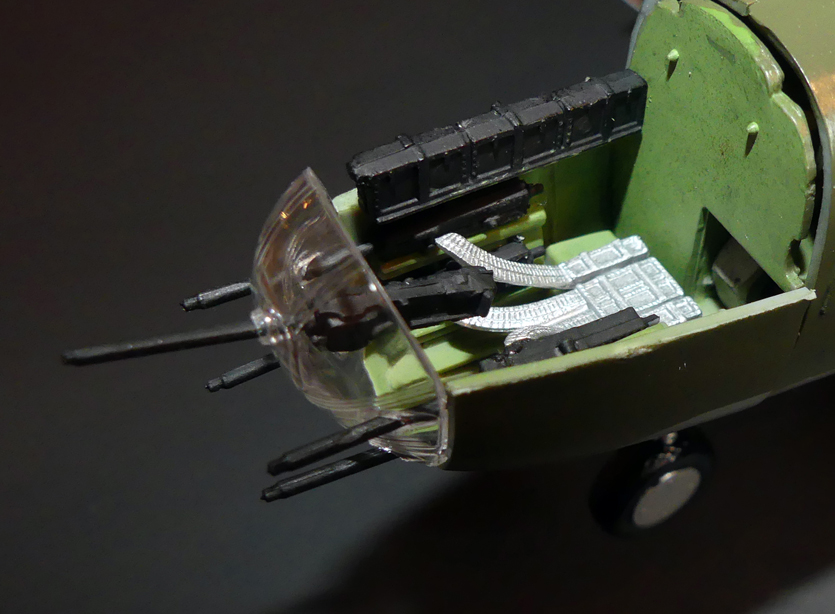
Five .50 in. (12.7 mm) Browning AN/M2 machine guns and ammunition chutes.

The hardest and most tedious task for me - masking the canopies, windows and turret.
This took me four hours of trial and error.
